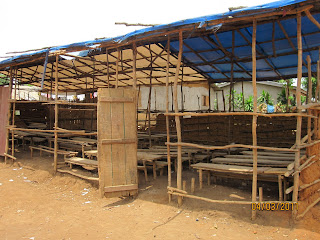Chapter One: Dr. Sandra Lako helps a child in need
Born in The Netherlands, Sandra Lako’s childhood years took an adventurous voyage across the African seas. Her family took a leap of faith and committed to long-term mission work onboard the Mercy Ships hospital ship, the Anastasis.
They served mainly in the impoverished countries of West Africa. So, from the tender age of two, Sandra was immersed in a lifestyle of serving the needs of the most deprived communities in the poorest nations. This was the life she understood and embraced. She recalls life on the ship as being contented and sheltered in some ways. Attending the ship’s academy enabled her to develop confidence and to find fulfilment in educational achievement.
Sandra’s unique upbringing offered opportunities that ignited her passion for medical work. At fifteen, she helped with some medical teams onshore. There had been a measles outbreak which left a trail of devastation in the health of the local population. Her duties were to help feed the malnourished sick children. On her first day, she witnessed children dying. That moment forever changed her life. She says, “There was so little to do to help. I felt helpless. It triggered thoughts that, medically, to have skills would actively help.”
That thought led eighteen-year-old Sandra to leave the ship, return to The Netherlands, and complete her education to qualify as a doctor. First, she achieved the International Baccalaureate qualifications needed for medical school before attending Nijmegen Medical School. During her studies, she visited The Gambia for her internship (elective), and then she went to Tanzania in her final year at medical school. Both experiences confirmed her passion to use her medical skills to help the poor. Finally, she completed a diploma program at the Liverpool School of Tropical Diseases. Now, she was primed and ready to practice as a doctor in Africa.
Shortly afterwards, in March 2005, she was presented with an incredible opportunity. Mercy Ships was planning to open a land-based facility in Freetown, Sierra Leone. They required a doctor to set up a clinic, but the scope of the services to be offered was undecided. Dr. Sandra valiantly took on the responsibility and immediately set about researching the priority health services needed.
To identify the optimal use for the new facility, she explored the local health system by shadowing doctors in local hospitals. Despite urgent medical needs for all the local population, Dr. Sandra discovered some alarming statistics regarding the high mortality rate of children – 1 in 5 children do not reach the age of five years old. She convinced the local community leaders that there was an over-riding need to provide a clinic for children. In May 2005, the clinic opened.
Early in 2009 a very sick child arrived at her clinic suffering from a condition commonly known as noma. This malicious and aggressive bacteria destroys the flesh. For most sufferers, it results in death. In fact, there is a 90% mortality rate.
This case was unusual. The little five-year-old girl, Namina Yillah had survived the condition for two months. Although her fighting spirit had avoided death, the severity of her symptoms was evident. Her face tragically displayed a gaping hole lined with decomposing tissue. To make matters even worse, her significant malnutrition was an imposing threat to her recovery.
Although the case looked impossible to treat, Dr. Sandra repeatedly asked herself, “How can we help?” This positive approach demonstrates the optimistic outlook and the resilience in the face of adversity that is so intrinsically in the heart of Dr. Sandra. She carefully evaluated every option for success.
There were no immediate solutions. Fundamentally, Namina had survived against all odds. Dr. Sandra decided to treat the wound and change the dressing every day. This intensive treatment was accompanied with improving Namina’s general health by providing multi-vitamins and cartons of milk.
After six months of daily treatment, the infection cleared and the wound stabilized. Namina was finally ready to receive surgery to rebuild her face. However, the local medical teams had little expertise and no facilities to perform this type of surgery. Only Mercy Ships could provide the treatment Namina so desperately needed. So the daily treatment continued for the next 18 months while waiting for the Africa Mercy to come to Sierra Leone.
During that time, Namina’s health remained in a delicate state. She was vulnerable to contagious bacteria and suffered from several illnesses, including malaria and chest infections. Dr. Sandra recalls, “She was a very sad little girl. We had to wait until the end of the day to do her dressing changes due to the pain. She was so brave.”
Finally, they received the news they had anxiously awaited! The Africa Mercy had docked in Freetown. The hospital ship . . . and hope . . . had arrived!
To be continued . . .
Story by Claire Ross
Edited by Nancy Predaina
Photos by Debra Bell
























































